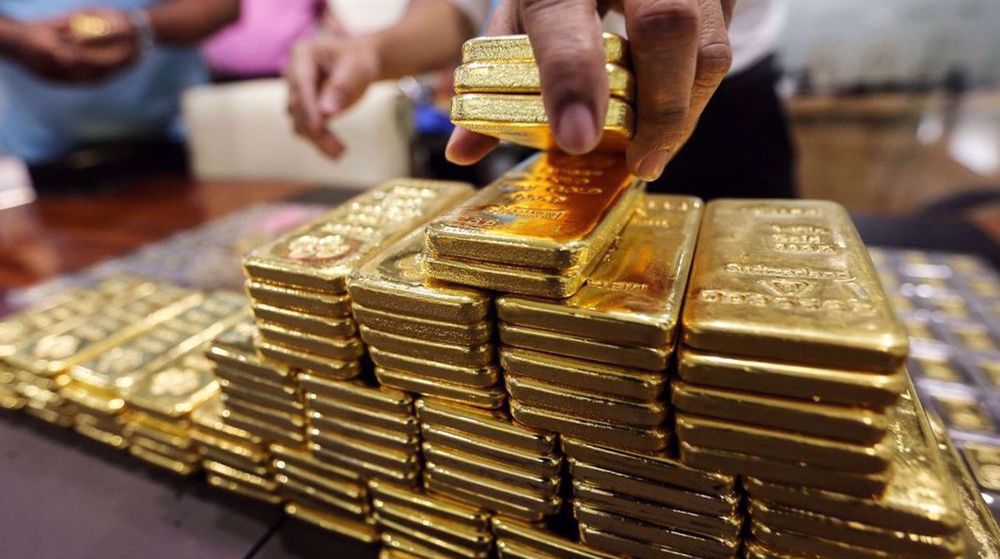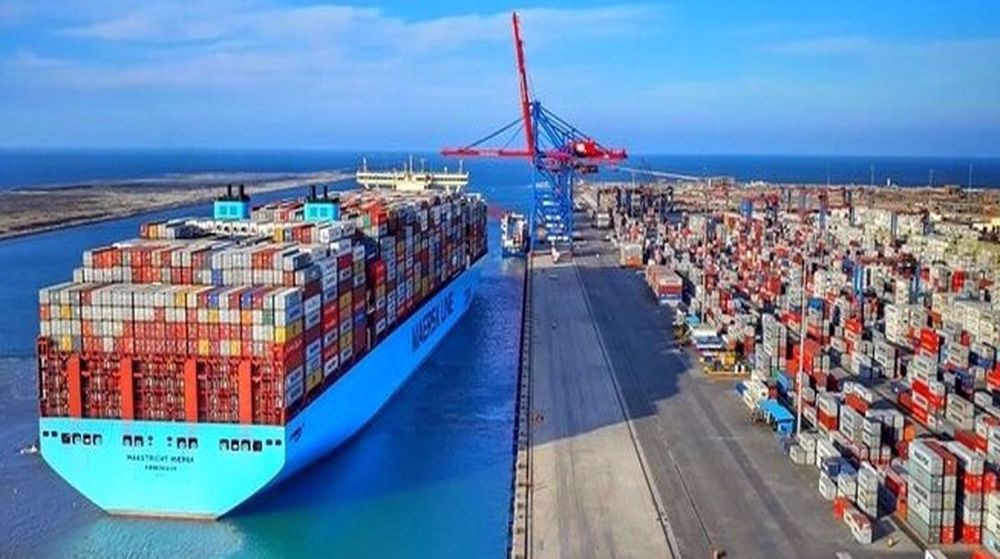Iran, Syria shaping up Mideast with 'strategic' deal
Iran and Syria have signed 11 agreements, including a “long-term strategic economic cooperation” deal, in a sign of changing winds in the Middle East which is shaping up to new realities.
Syrian Prime Minister Imad Khamis said Syria and Iran signed a "unique" and “historic” agreement which includes industry, trade and agriculture, calling it “a message to the world on the reality of Syrian-Iranian cooperation.”
Iran has played a crucial part in helping Syria overcome more than seven years of foreign-orchestrated war. However, the agreements signed during a visit to Damascus by Vice President Es’haq Jahangiri Monday signal Iran’s deeper involvement in post-war Syria, notably in the country’s reconstruction.
President Bashar al-Assad has estimated that Syria’s reconstruction will cost between $250 billion and $400 billion. He has made it clear that the West "won't be part of reconstruction in Syria, because very simply we won't allow them to be part of it, whether they come with money or not."
“We have enough strength to rebuild the country. If we don’t have money, we will borrow from our friends, from Syrians living abroad,” he said.
According to senior Iranian MP Allaedin Boroujerdi, the recent agreements are "a firm response" to the United States and its Western allies "investing billions of dollars to change the political structure of the Syrian government."
They also come after Israeli Prime Minister Benjamin Netanyahu threatened to target Iranians in Syria if they do not leave the country, drawing a stark warning from Iranian military commanders.
The Syria war has upended the country's traditional economic alliances. Between 2004 and 2010 when the war began, the Arab country had developed a strategic alliance with Qatar and Turkey.
Syria was the fourth largest recipient of investment from Arab countries in the period, attracting $38 billion only in 2005, while Turkish projects also mushroomed.
Iran, by comparison, played a small role in pre-war Syria. In 2010, prior to the outbreak of the war, bilateral trade stood at $545 million but it nearly doubled to more than $1 billion in 2017.
That was when Iran, unlike other regional states, entered into many economic cooperation to rebuild Syria’s infrastructure and productive sectors destroyed by the war.
In 2013, Iran provided Syria with a $1 billion credit line as Damascus came under sanctions by the US and the EU amid a sharp decline in oil-related revenues and the loss of funds from taxes and enterprises in places where terrorists ruled supreme.
A second loan worth $3.6 billion came within eight months of the first for the purchase of oil products, with another $1 billion in credit line provided in 2015 to offset the sharp drop in the value of the Syrian pound.
In addition to providing loans, Iran has participated in Syria’s infrastructure projects, food production, and health services.
Currently, most goods exchanged between the two sides are not subject to taxes and customs tariffs under a free trade deal signed between them in 2012.
With the post-war reconstruction process already set in motion, Syria counts on Iran as its economic lifeline.
Because of terrorist attacks and US-led bombings, millions of homes, educational and health facilities, and infrastructure remain either damaged or destroyed.
Iran is best placed to play a leading role in their reconstruction because it is currently the Middle East’s largest producer of cement and steel.
Moreover, several important projects halted after the outbreak of the war can be revived, most notably a $10 billion natural gas pipeline to take Iranian gas to Iraq, Lebanon, and Syria and from there to Europe through the Mediterranean.
As it stands, a US military base on the border between Syria and Iraq appears to be the most immediate hurdle to its implementation.
On Friday, Washington-based Foreign Policy magazine said the United States plans to keep some of its forces at al-Tanf base in southeastern Syria despite a total withdrawal ordered by US President Donald Trump.
US forces at the base train and arm several groups of militants fighting to topple the government of President Assad.
In 2016, Iran restarted a car plant set up before the war to make budget cars for poorer Syrians who have been hit the hardest by the war.
Car parts have to be shipped by sea instead of via the shorter land route because Syria’s border with Iraq is closed amid the US military presence and Western sanctions make it hard to transfer money.
According to Saipa Syria general manager, Emad Alavian, the Iranian government has granted “big discounts” to help the Syrian customer.
“The purchasing power of customers dropped, but we see an improvement in conditions. We see new movement,” he told Reuters in November.
Alavian hoped to double production in 2019 to around 2,000 cars from the 1,000 he expected to assemble last year.
Before the war, Iran and Syria had also agreed to establish a joint bank in Damascus, 60 percent of which would be owned by the Iranian government, and discussed setting up a regional economic bloc.
The agreements signed in Damascus Monday, covered a range of fields including economy, culture, education, infrastructure, investment and housing, the official SANA news agency reported.
Prime Minister Khamis cited “legal and administrative facilities” to benefit Iranian companies wishing to invest in Syria and contribute “effectively to reconstruction.”

The agreements reportedly included two memos of understanding between the railway authorities of the two countries as well as between their respective investment promotion authorities.
In relation to infrastructure, there was also rehabilitation of the ports of Tartus and Latakia as well as construction of a 540 megawatt energy plant, according to Khamis.
In addition there were “dozens of projects in the oil sector and agriculture,” he added.
Oil was Syria’s most important foreign exchange earner before the war when the country produced 327,000 barrels per day in 2011.
Agriculture still represents 23 percent of GDP in Syria which has a large rural population of over 40 percent, far higher than many other parts of the Middle East.
Recent agreements are believed to raise annual trade to $5 billion. The figure, while apparently minuscule, is significant in a war time for Syria as well as for Iran which is facing the most stringent US sanctions ever.
Syria is set to benefit the most because the agreements will open up a new market for its goods and increase the country's revenues which have plummeted amid the war.
Hamas thanks Iran, Resistance Front following achievement of ceasefire in Gaza
'Capitulation': Israeli officials and media concede Gaza defeat as truce unfolds
'Gaza has won': Social media users react to ceasefire with mix of relief, joy
Iran seeks South Korea’s assistance for AI, fiber-optic projects
VIDEO | Iran's 'Eqtedar' (Power) maneuver
Israel hits HTS military target in Syria for 1st time since fall of Assad
VIDEO | Press TV's news headlines
Israel has slaughtered 13,000 students in Gaza, West Bank














 This makes it easy to access the Press TV website
This makes it easy to access the Press TV website